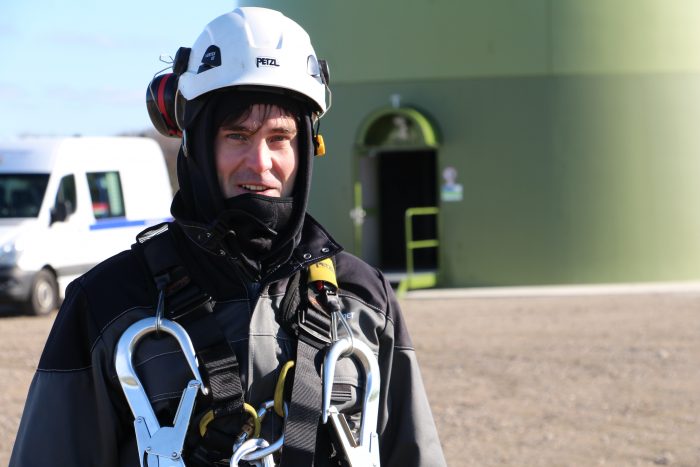The cost pressure in the wind energy sector increases. This has been predicted for years. Last year, however, this prophecy proved truer than ever. Large, well-known companies began to cut jobs massively. Now, at the latest, it has become clear to the last one: the „rising cost pressure“ is not a platitude, but as real as ever before.
The pressure on costs does not stop at the operational management either. At the same time, the requirements for the operation of wind farms are increasing enormously. New regulations emerge every year. „Operation managers must continuously develop their range of services in order to be able to cover all activities in the field of wind farm management themselves,“ explains Till Schorer, Director Sales at wpd windmanager GmbH & Co. KG. These include, for example, a 24/7 control room in three-shift operation, an in-house field service, experts for the respective turbine manufacturers, specialists for rotors, foundations or gears, country managers for the management of international wind farms, an IT department that monitors all communication with the wind farms or engineers who develop their own solutions for various problems. „In addition, the expectations of operators are rising and with them the demand for increasingly customer-specific services – for example in the area of reporting or for the comprehensive portfolio management of different wind farms,“ says Schorer.
LITTLE VS. LARGE OPERATION MANAGERS
This has major consequences, especially for smaller operation managers. Over the next few years, they will struggle even harder to cope with this tension between cost pressure and increasing demands. For them it will be more difficult to compensate financial bottlenecks and they will not be able to compete with the size of other operation managers. In order to maintain their position on the market, they must choose alternative paths, specialize or forge partnerships.
In general, the challenges for larger operation managers lie more in the further development of structures and in the expansion of their know-how. On the one hand, processes must be optimized or interfaces between individual solutions must be established in order to ensure fast and smooth communication with systems from external service providers, for example. On the other hand, this concerns the recruitment and retention of specialists, who are also strongly courted by other industries. „We feel the shortage of skilled workers, for example, in financial accounting or in electrical engineering. Competition is increasing enormously here,“ explains Schorer. „This is why we are placing even greater emphasis on the training and development of our employees.”
But what other challenges do operation managers have to face? „Last year, the key issues were the continued operation and consequently also the repowering,“ says Schorer. „This year, these topics will also keep us busy in the operational management.“ As new challenges this year, the KRITIS (Critical Infrastructure) and TR10 (Technical Guideline 10) regulations are particularly worth mentioning.
CRITICAL INFRASTRUCTURES
IT is playing an increasingly important role in society – including wind energy. In the event of failures or malfunctions, supply bottlenecks can occur. If this concerns an industry, this falls into the area of KRITIS. According to the BSI (Federal Office for Information Security), one of the tasks of an operation manager is to establish an information security management system and to check this at regular intervals in order to reduce risks. Special security incidents must be reported to the BSI accordingly. In recent years, wind farms have increasingly been targeted by hackers. The topic of CEO fraud is also becoming more and more critical for IT departments – especially in larger companies. In general, it can be noted: Concerning the IT security, there is a general pent-up demand in the operational management of wind farms.
TECHNICAL GUIDELINE 10
This year, special focus will also be placed on the regulations of the EEG 2017 and the concrete procedures from the Technical Guideline 10 of the Fördergesellschaft Windenergie und andere Dezentrale Energien (FGW e.V.). A central point: The EEG defines that for calculating the fictitious quantity of electricity specified in the EEG, the operation manager of the plant is obliged to organize a data storage system from which the necessary operational states of the plant can be read out by authorized third parties without being changed subsequently. „The data concerned are described in detail in TR10 and are known since the publication by the FGW at the beginning of 2017. Therefore, the focus lies on the aspect of non-subsequent changeability“, describes Schorer. However, TR10 does not deal with this in detail and does not describe it in regulatory terms. In addition, TR10 provides a completely new definition of availability that differs both from the manufacturer’s specified calculation formulas and from the guaranteed figures. Within the framework of TR10, there is also a shift in remuneration from the park to the individual wind turbines. Therefore, the TR10 will continue to be an important topic for the operational management this year.
